From edema to tethering to ulcers and beyond
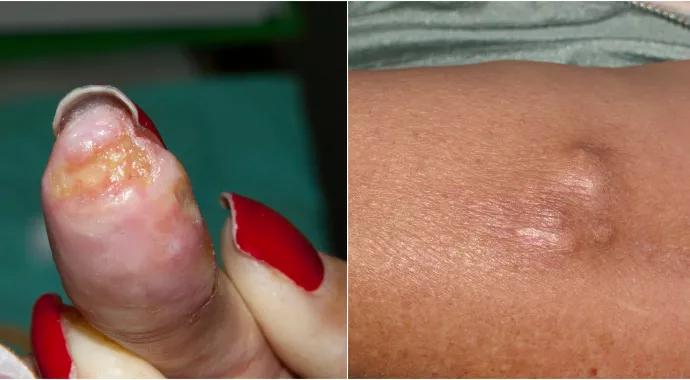
By Soumya Chatterjee, MD, MS, FRCP
Cleveland Clinic is a non-profit academic medical center. Advertising on our site helps support our mission. We do not endorse non-Cleveland Clinic products or services. Policy
Systemic sclerosis (SSc) is also known as scleroderma, which is derived from the Greek skleros (“hard”) and derma (“skin”). As the nomenclature implies, skin thickening is a considerably debilitating characteristic of this condition, especially in diffuse disease.
SSc is characterized by immune system activation, endothelial dysfunction, enhanced fibroblast proliferation and increased production of extracellular matrix proteins.
The earliest stage in the pathogenesis is endothelial cell activation and microvascular injury, which is followed by the extravasation of inflammatory cells and activation of fibroblasts. These activated fibroblasts become autonomous and continue to produce an excess of extracellular matrix proteins that underlie the ultimate fibrotic pathology in SSc. Very little evidence of ongoing inflammation is visible within advanced lesional skin, suggesting that this is a self-perpetuating fibrotic process. Histologically, areas of indurated skin are characterized by excessive deposition of compact or hyalinized collagen, atrophic eccrine and pilosebaceous glands, loss of subcutaneous fat, and sparse lymphocytic infiltrate in the dermis and subcutis.
The skin changes of SSc usually start with an early phase of skin edema, manifested as swollen fingers, hands and feet. In diffuse disease, these changes are soon followed by development of firm, thickened skin over the extremities, trunk and face. This thickening can lead to skin tethering and flexion contractures of joints (center image below).
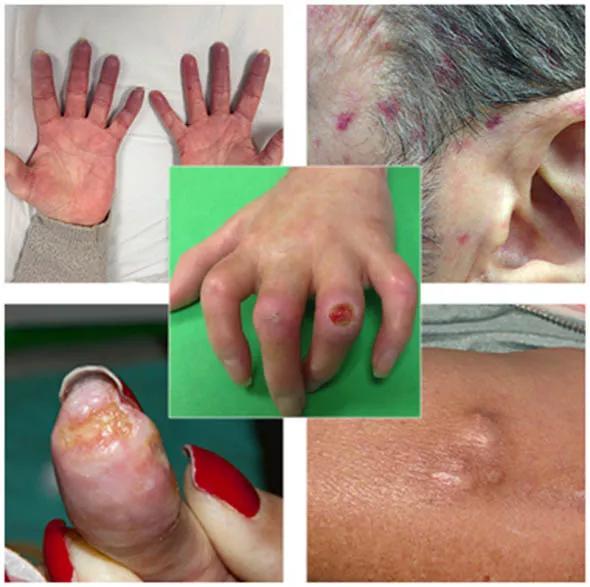
Apart from skin thickening, other cutaneous manifestations of SSc include Raynaud phenomenon (top left image, showing the cyanotic phase of Raynaud phenomenon), ischemic digital ulcers (bottom left image) and ulcers over the extensor aspects of the metacarpophalangeal and interphalangeal joints, resulting from repeated microtrauma (center image).
Other features include pruritus, progressive cutaneous telangiectasias (top right image), calcinosis cutis (bottom right image), hyper and/ or hypopigmentation, and alopecia and skin dryness from loss of eccrine sweat glands and pilosebaceous units.
Dr. Chatterjee directs the Scleroderma Program in the Department of Rheumatic and Immunologic Diseases.
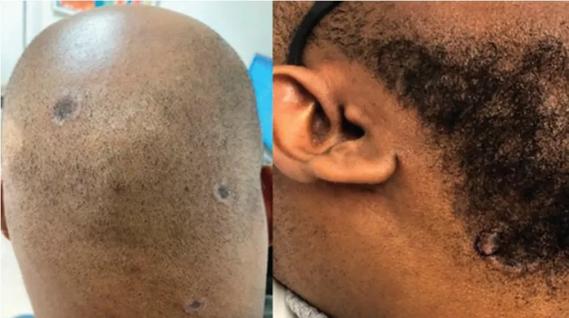
Consider secondary syphilis in the differential of annular lesions
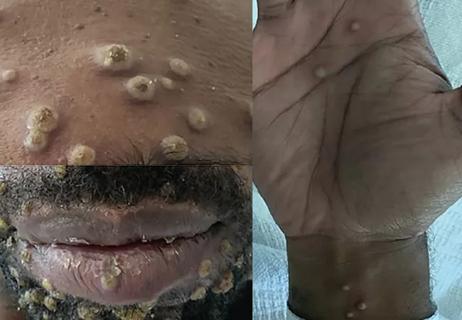
Persistent rectal pain leads to diffuse pustules
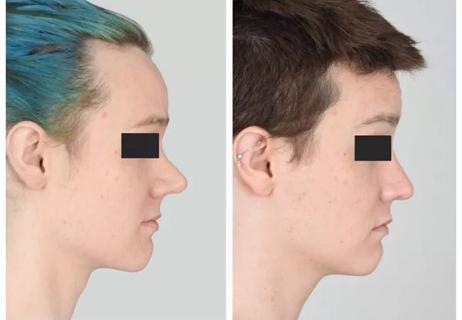
Techniques are borrowed from rhinoplasty, malar augmentation and others

Two cases — both tremendously different in their level of complexity — illustrate the core principles of nasal reconstruction
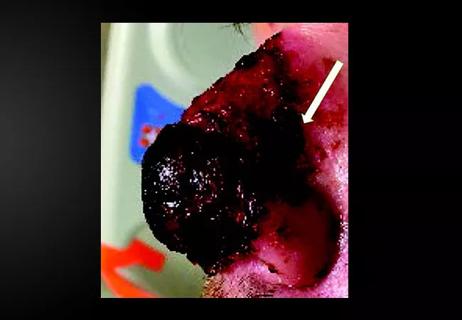
Stress and immunosuppression can trigger reactivation of latent virus

Low-dose, monitored prescription therapy demonstrates success

Antioxidants, barrier-enhancing agents can improve thinning hair